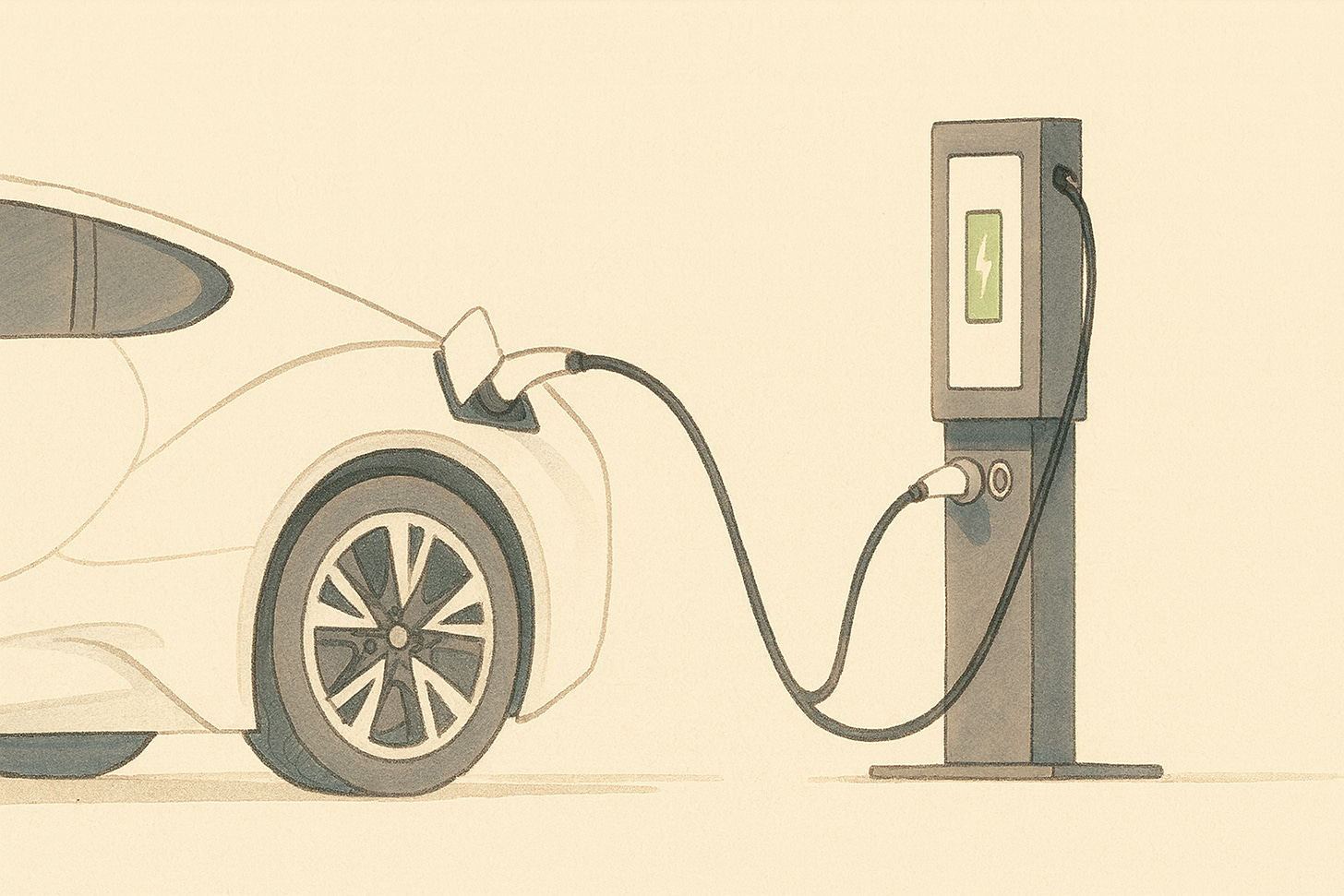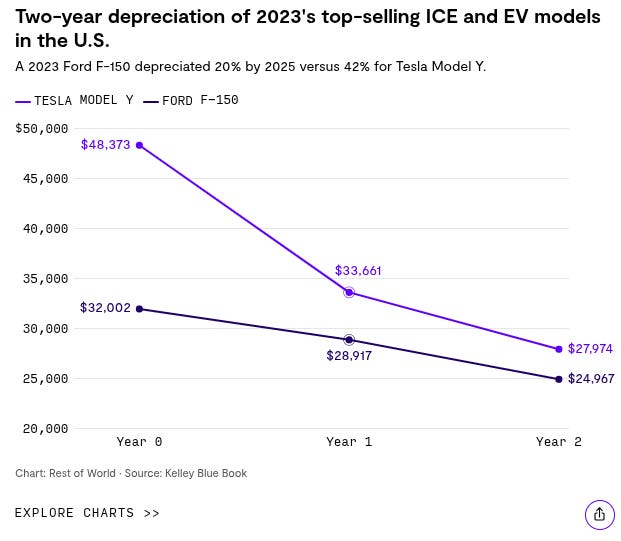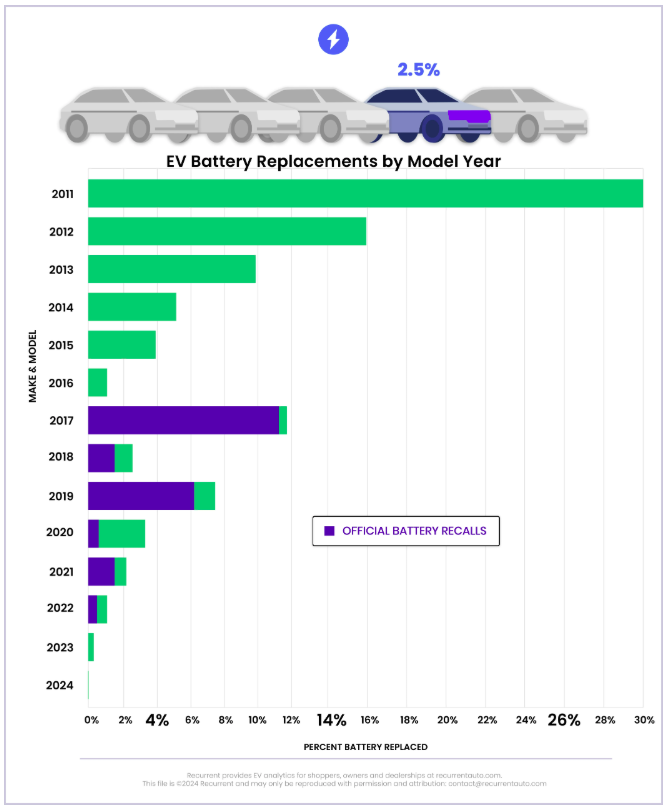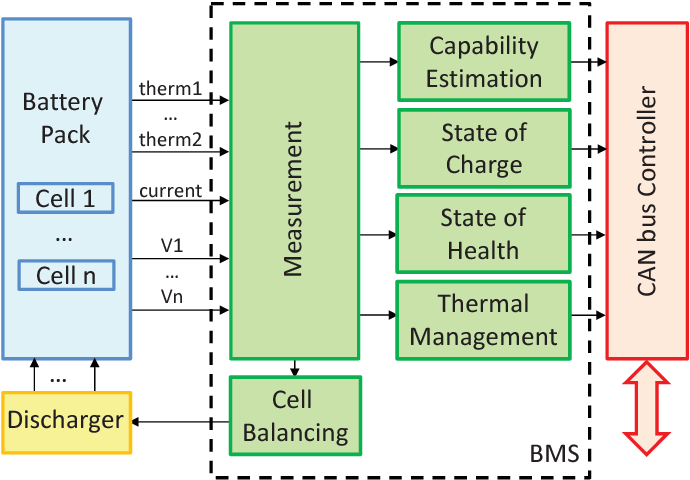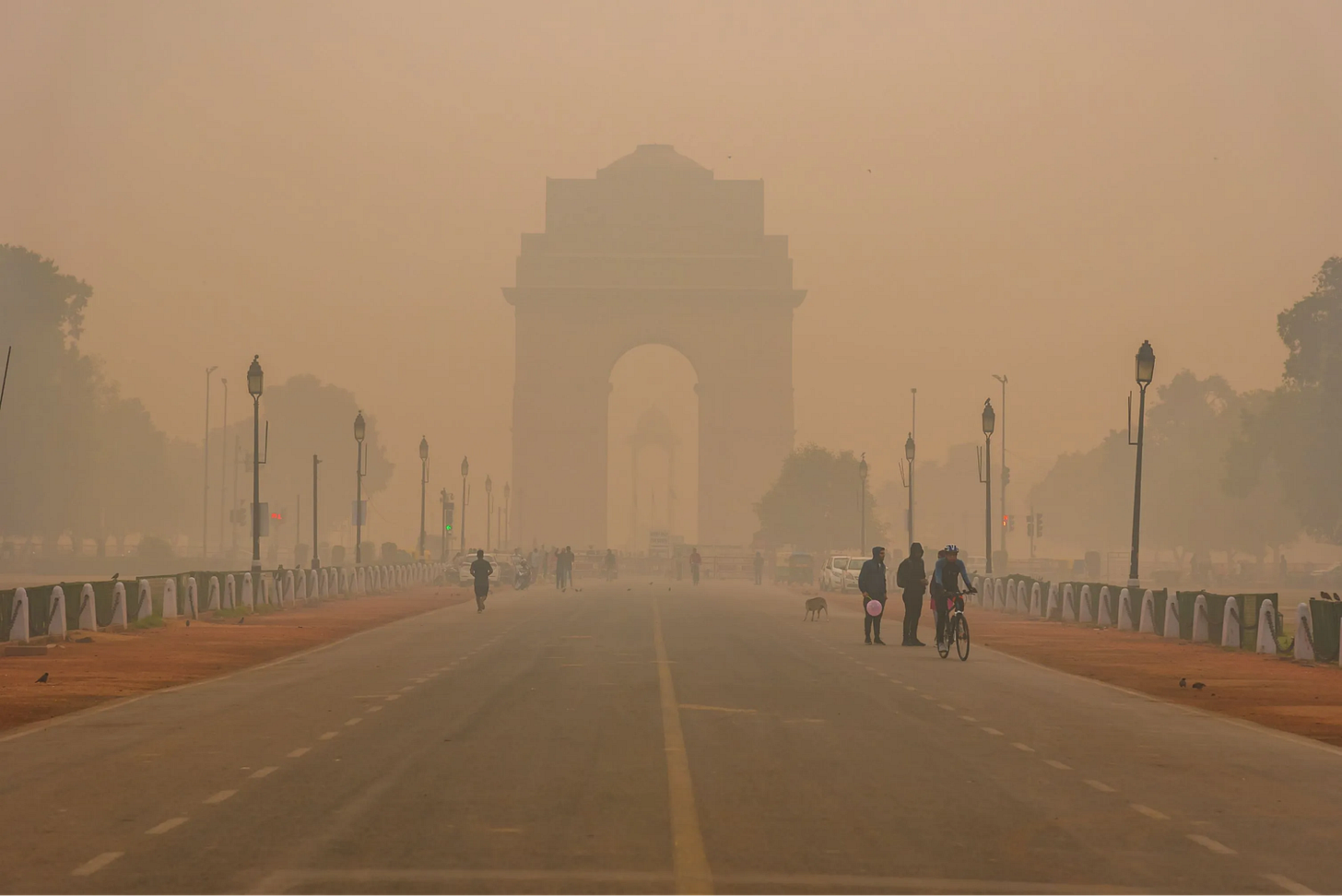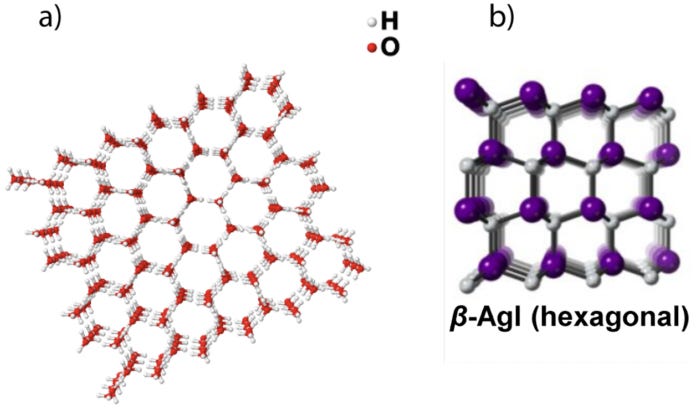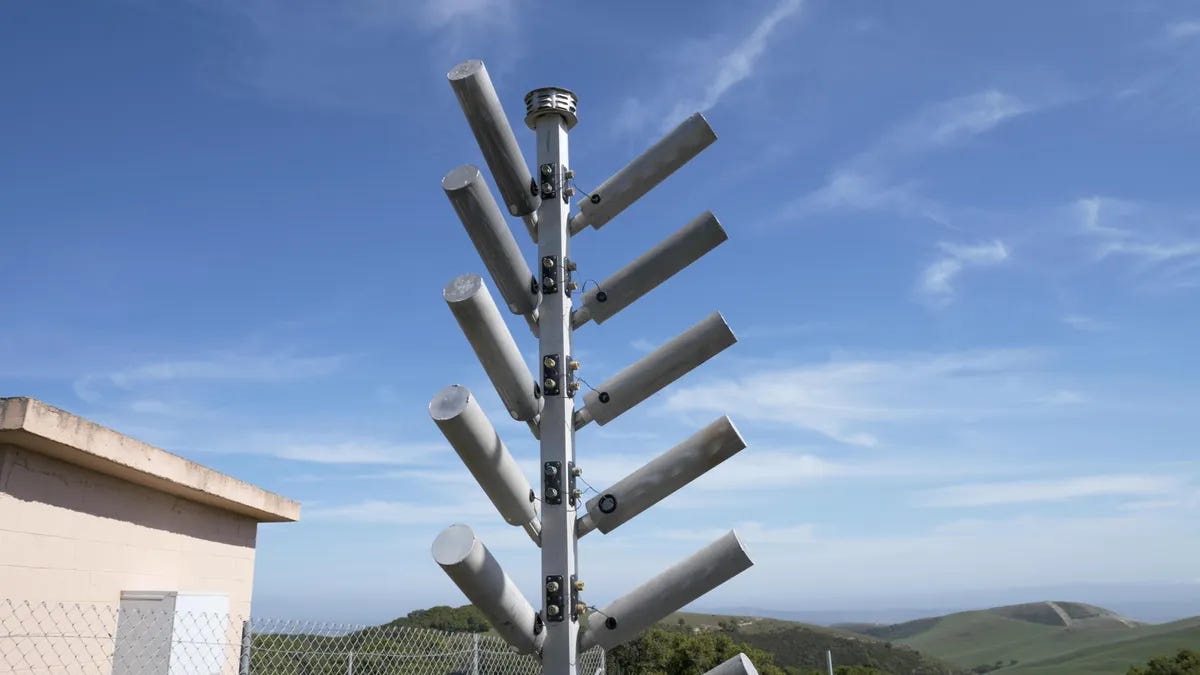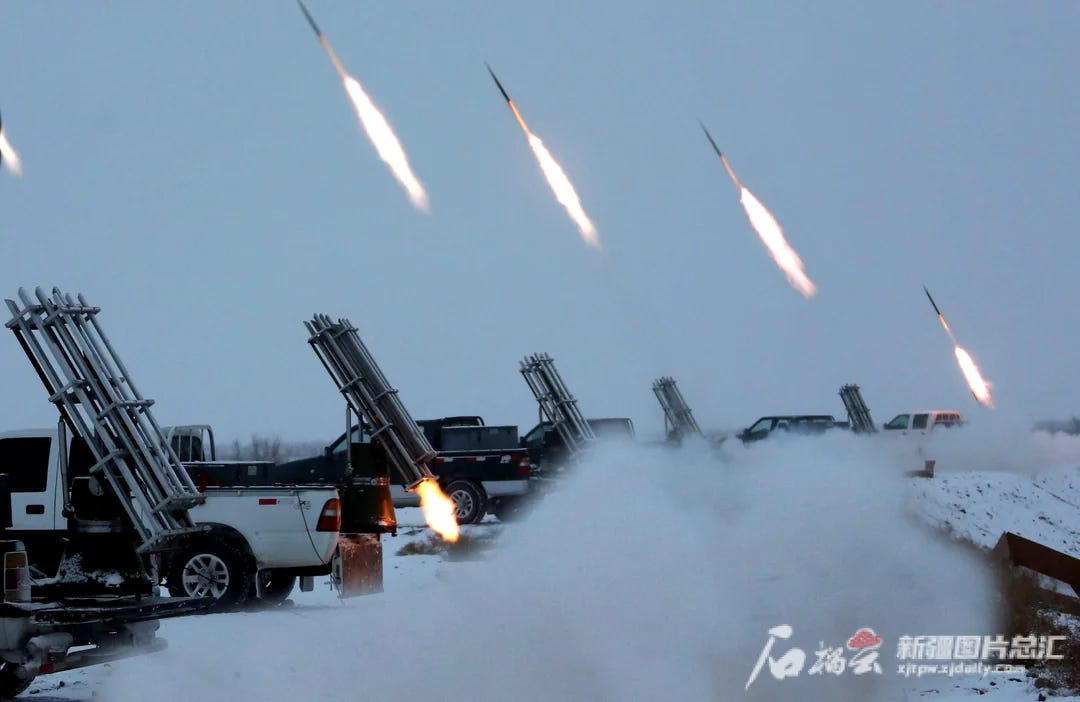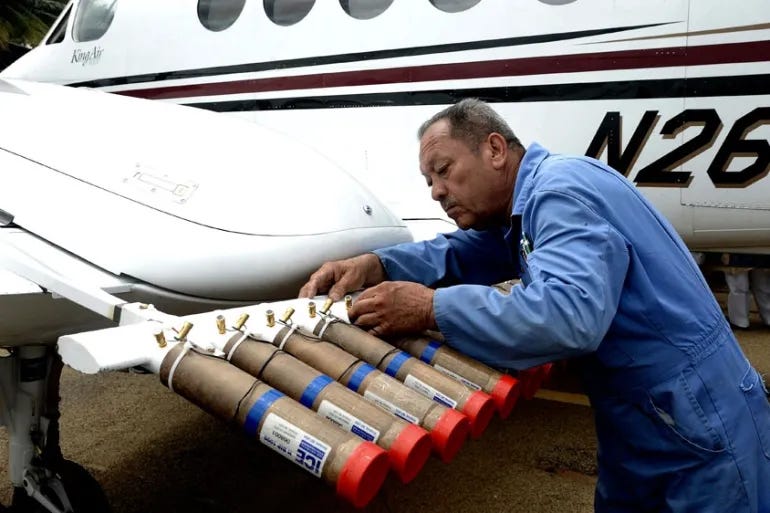Our goal with The Daily Brief is to simplify the biggest stories in the Indian markets and help you understand what they mean. We won’t just tell you what happened, we’ll tell you why and how too. We do this show in both formats: video and audio. This piece curates the stories that we talk about.
You can listen to the podcast on Spotify, Apple Podcasts, or wherever you get your podcasts and watch the videos on YouTube. You can also watch The Daily Brief in Hindi.
Just a quick note. Since a lot of you ask us how we research our stories at The Daily Brief, we decided to pen it down.
The truth is, there’s no secret formula. Just a few people who read a lot, argue a lot, and follow curiosity wherever it goes. Here’s what a typical day looks like:
In today’s edition of The Daily Brief:
- Why EVs are actually depreciating faster than gasoline cars
- Playing God: Delhi tries to create rain from nothing
Why EVs are actually depreciating faster than gasoline cars
Recently, Rest of World did a story on how, right after going bankrupt, BluSmart was forced to sell its EV taxis. But there was one problem: these cars — which were in good, healthy condition — sold for barely a quarter of their original price.
Now, this was partly because BluSmart’s distressed business needed to sell off assets quickly. But this also exposed something else: EVs are depreciating pretty fast .
In fact, across the world, they’re depreciating faster than their gasoline counterparts. In late 2023 in the US, used EV prices fell 32% year-over-year while conventional car prices dropped only 7%. Rental company Hertz wrote down hundreds of millions after its fleet of Teslas depreciated faster than projected.
For end consumers like us, the resale value of a car is a huge factor that influences a purchase. This is especially true of a value-conscious country like India — we have outright rejected cars that didn’t cater to our notions of value. This logic currently makes EVs unattractive, and might even hamper EV adoption.
But, turns out, there’s a lot more nuance to why EVs depreciate. Not all of it signals failure. In fact, a huge chunk of it reflects an industry evolving at breakneck speed — be it through technological development, policymaking, or even consumer behavior. It’s the growing pain of a technology still finding its footing.
And that’s what we’ll look into: what EV depreciation says about the industry as a whole. Let’s examine what’s driving this phenomenon.
The battery black box
At the heart of every EV depreciation story sits one component: the battery pack. This shouldn’t be surprising, as batteries account for 30-40% of an electric car’s purchase price.
For a long time, battery degradation has been a major concern, especially in early EVs. With an EV, mileage and age are less important than the lifespan of the battery. Batteries also get degraded if a buyer charges it often even when it has full charge. Since the battery makes up a big chunk of an EV’s price, replacing it is also an expensive affair. Unsure how the batteries in their cars would age, manufacturers offered restrictive, shorter warranties.
But, this has grown less of a concern over time as battery tech has made huge leaps. Modern EV batteries lose only 1-2% capacity per year. And as per Recurrent, in fleets, just 1% of EVs made post-2016 have needed pack replacements, versus 13% of older models.
So, over the past decade, automakers have extended warranties to indicate confidence in the tech. BYD, for instance, offers 8 years (or 1.6 lakh kilometer, whichever comes first) warranties, which are now also the industry standard. Tata Motors, in fact, recently introduced a massive 15-year battery warranty on select Indian models.
But while battery tech is improving, there’s another problem that’s much bigger: there’s no easy way to gauge the health of an EV battery . In other words, the EV battery is a black box that cannot be opened up and investigated. Without knowing the battery’s health, it becomes very difficult to assess the worth of a used car.
Why is that? The critical data about a battery, like how the battery’s been used or how much capacity remains, sits locked inside proprietary battery management systems (or BMS) accessible only through authorized service centers. It’s very difficult for a third-party to break into a BMS. Moreover, each automaker uses different BMS software and has different definitions about the state of health (or SoH) of an EV battery.
A basic diagram of a BMS (Source)
This opacity creates cascading problems for everyone. For one, used car buyers are unable to gauge remaining range or battery life correctly. Additionally, lenders and banks also face elevated risk because they lack information to value a used car properly.
Change, the only constant
Beyond battery opacity, there’s another factor accelerating EV depreciation: the breakneck pace of innovation in EVs .
The EV industry is changing rapidly — the competitive lifecycle of any given EV model is far shorter than a traditional car’s. Each year, there’s a new model that seems to bring noticeably better range, faster charging, improved software, and so on. With rapid change, old ones become obsolete in no time.
Think of it this way: a 2018 EV with 150 miles of range and 50 kilowatt (kW) charging is a tough sell when similarly priced 2025 models offer 300+ miles and 150 kW fast-charging. In contrast, right now, gasoline cars aren’t expected to evolve as fast as EVs as their technology has matured. There won’t be too many differences in a 2015 gasoline car and a 2020 one.
What’s more, the modern EV is made up of many electronic components that themselves are evolving rapidly, like an operating system software, semiconductor chips that power various car parts, and many different sensors. We already know how quickly chips are advancing today. The battery tech itself is also advancing rapidly.
Here’s the thing: in contrast to a reason like battery opacity, depreciation driven by technological advancements isn’t really negative. In fact, it is only natural that this should happen. As EV technology matures, improvements will become more incremental, which will slow down the depreciation rate.
Quirks in the EV market
Now, both the reasons we’ve mentioned above seem inherent to how an EV works. But the more external reasons related to how the EV market works are also really interesting. One such reason is government subsidies.
Government subsidies
Now, subsidies have been vital for spurring EV manufacturing and purchases, especially in China. However, the same subsidies that make new EVs cheaper have also amplified depreciation rates — but not entirely in the way you might think.
Here’s how: when a new EV that costs a certain amount comes with subsidies, the effective purchase price drops well below the retail price, making new EVs more attractive than old ones. But, resale values often get compared to today’s market prices rather than the subsidized price, making the depreciation appear more catastrophic than it really was for the original owner .
Let’s illustrate this with an example. Say there’s an EV with an MRP of ₹25 lakh that you purchase for ₹20 lakh after subsidy. After 5 years, you’ve decided to re-sell your car at a price of ₹15 lakh, but a new version of the car now charges the full ₹25 lakh with the subsidy removed. Now, a seller compares your quote against the new car’s price today, but not the subsidized price you paid 5 years ago. It may look like a steep drop from ₹25 lakh, but not from ₹20 lakh.
This dynamic misleads both consumers and analysts about how severe depreciation really is, while setting further expectations for used car prices in the market.
The zero-mile used car
A more unusual force is also depressing global used EV prices: China’s “zero-mile used car” exports. And it has a lot to do with how China’s EV policy works today.
In China today, if an EV is exported abroad instead of sold to a domestic consumer, then the carmaker isn’t eligible for certain subsidies. So, Chinese automakers invented a clever loophole to sidestep this. They would sell brand-new cars at wholesale prices to dealers, who would domestically register them with a license plate, making them eligible for subsidies. Then, after some time, the dealers would deregister them and label them as “pre-owned cars “ that can be exported out at much higher prices — though these are hardly driven .
And this is a huge phenomenon. In 2024, 90% of China’s 436,000 used vehicle exports in 2024 were these almost brand-new, zero-mileage cars. This practice effectively dumps nearly-new, subsidized cars into overseas markets at steep discounts, creating downward pressure on non-Chinese used car values worldwide. In fact, this practice is partly why China is often accused of dumping their cars onto other countries.
Policy and industry responses
Industry stakeholders and governments have increasingly recognized that persistent high depreciation could negatively affect EV adoption. Several policy measures are emerging to address this.
One such measure is battery health certification and disclosure. The EU, for instance, has launched a battery passport which mandates digital records of a battery’s health to be made available to buyers starting from 2027. Startups that are developing their own SoH tests and certificates by pulling system data are emerging.
Additionally, many automakers have launched certified pre-owned EV programs including battery health checks. BYD, for instance, launched their own Certified Pre-Owned scheme, where used BYD cars would go through a battery check by the company itself and be given health certificates.
Secondly, as we mentioned before, companies like BYD, CATL and even Tata are extending warranties . Even Chinese battery makers, such as CATL, now tout cells with 15-year, million-kilometer warranties.
Third, companies are coming up with models for battery leasing . For instance, China’s Nio offers “battery-as-a-service “, where customers buy the car but rent the battery separately, or can swap for new batteries later. So customers don’t have to burden themselves with the high costs of owning a battery that also ages with time.
What India is doing
Now, in India, the market for EVs as a whole — and therefore used EVs — is still small. However, it is rapidly growing. And India has begun taking some regulatory measures to ensure that EVs look attractive to consumers from a resale point-of-view.
For example, the Indian government is moving to exempt EVs from the end-of-life scrappage rule that applies to gasoline cars, under this rule, petrol cars are forced off the road after 15 years for pollution reasons. But EVs would continue operating beyond 15 years, signaling that electric cars have longer useful lives and better resale potential than ICE vehicles.
India is also beginning to take measures for maintaining battery health. For instance, the Battery Waste Management Rules of 2022 outline the responsibilities of producers and buyers when it comes to recycling batteries. Knowing that the battery will have safe disposal will help preserve its long-term value. However, proper standards for battery health are yet to be established.
Conclusion
To a large degree, the story of EV depreciation is a story of an industry in flux. Much of the depreciation is for reasons that are inherent to how the industry is evolving. One can expect that as the industry matures, so will the rules that govern its resale value, as well as the consumer attitudes around EVs.
But despite this depreciation, EV adoption across the world continues to look impressive. What helps is that EVs are far easier and cheaper to maintain than gasoline cars — EVs have fewer parts that need replacing, while gasoline cars need to routinely replace oil filters, spark plugs, and clear out exhaust systems. Moreover, the price of lithium-ion EV batteries has been falling constantly due to innovation.
Even depreciation doesn’t seem to largely dent how the world is warming up to EVs. But solving for it could really boost its speed.
Playing God: Delhi tries to create rain from nothing
Every winter, the city of Delhi — and most of North India — turns into a gas chamber where breathing becomes a challenge.
This is hardly news. What is newsworthy, however, is the Delhi government’s experiments in combatting this issue — by creating artificial rain . On October 23, the Delhi government carried out its first ever cloud-seeding trial flight, sending a small aircraft over the city’s skies. The plane flew across two small patches of clouds in the northern parts of the city, firing pyrotechnic pistols filled with chemical salts into them.
The Delhi government declared the trial a success. Technically, it appears, the plan worked. This time around, the clouds were too small to actually create rain. But if and when suitable clouds do arrive, Delhi will have the ability to wring rain out of them.
Just consider the sheer audacity of this project. Summoning rain is a fantasy that humanity has entertained for all of our history — and indeed, is the subject of many rituals across the world. To do so on command is straight out of a science fiction book.
Naturally, we at The Daily Brief were fascinated by what is happening, and what it means. What we found, as we dug in, was deeply complex. Cloud seeding, it appears, is backed by some genuine science, and it could blossom into a massive commercial opportunity. Yet, it isn’t a silver bullet solution to our problems (even if it involves firing literal silver at clouds). It is hard to control, only works in a narrow range of conditions, and even then, brings modest improvements at best.
Here’s everything we learnt about this fascinating-yet-frustrating technology.
The technical basis
There’s a basic problem that cloud-seeding tries to solve.
There are any number of reasons you might want rain, from feeding water to a region hit by drought, to clearing out pollution. Only, rain is a horribly uncertain thing. You could have clouds that are filled with water floating right above rain-starved regions — and yet, they may not have enough water to kick-start rainfall. Just like that traumatic scene from Lagaan.
Since the 1940s, however, we’ve had some ideas around how we can nudge those clouds to rain anyway . To do so, we could add additional “nuclei” to those clouds, around which water drops can coalesce. If there’s enough water in the air, you might create enough droplets to make it rain.
There are three engineering challenges behind this process: (a) how you find the right clouds to target; (b) what chemicals you sprinkle them with; and (c) how you get those chemicals into the clouds. These are all problems that, increasingly, we’ve learnt to get around. Let’s get into them one-by-one.
Finding the right clouds
There are two basic types of clouds that we’ve learnt to make rain from.
The most common are extremely cold, moisture filled clouds. These are filled with something called “supercool liquid water ” — water that’s well below its freezing point, and is itching to turn into ice, but can’t find a nucleus to freeze around. If you can provide that nucleus, the water starts freezing around it, turning into flakes of snow. Get enough of those, and they’ll start falling as rain.
You can also work with warmer clouds, however, provided they’re thick and deep enough. These should already contain a lot of water — only, there are far too many tiny water droplets, none of which are big enough to turn into raindrops. In that case, you can enlarge some droplets. These start growing bigger and heavier, and then bump around into the droplets around them, sparking off a chain reaction. With a big enough chain, you could spark rainfall.
In both cases, you’re also looking for a gentle “updraft” — a wind that’s slowly moving upwards, pushing the chemicals you release up through the cloud, and ensuring that the rain “embryos” you create have enough time in the air to work their magic.
Finding these conditions is hard, and boils down to perfect timing . The window for cloud seeding can be as small as 30 minutes. To figure that window, you need to monitor the skies constantly using radars and satellites. And then, you need to target them precisely. Pulling all of this together is a massive exercise in coordination. The recent experiment in Delhi, for instance, was a massive joint effort between the Indian Meteorological Department and IIT Kanpur.
The chemicals
Now, the second challenge: the types of clouds you target changes the chemicals you use.
In extremely cold clouds, you’re trying to find a way to turn supercool water into ice. This process is hard to kick-start. Most snowflakes in nature form themselves around little particles of dust or pollen. In cloud seeding, you’re trying to provide something similar for water to freeze around.
Interestingly, if you zoom in closely, the chemical silver iodide looks terribly like solid ice. At the atomic level, both arrange themselves into little hexagons, making it the perfect candidate particle for the job. Water collects around little kernels of silver iodide — just like they would to little flecks of ice — to make snow flakes. These, as they fall, turn into rain.
But there are other ways of doing so. For instance, we’ve also tried pumping extremely cold chemicals, like liquid propane or dry ice, into clouds, cooling them even further to make ice.
With warmer clouds, the process is a little different. The challenge, here, is that there are too many tiny droplets of water in the cloud, but they aren’t coming together to make bigger ones. It’s too hot for them to collect as ice. So, you release what’s called a “hygroscopic ” salt, or a salt that draws water towards itself. That’s a property that you even see in common salt (or “sodium chloride ”). Release a little bit of super-fine sea salt into the cloud, and it instantly starts collecting water around it, creating a larger water droplet.
If the cloud is deep enough, those droplets travel through the cloud, collecting more and more water around them. Meanwhile, this whole process creates a lot of turbulence within the cloud, forcing other tiny water droplets to collide and form bigger drops as well. It essentially sets off a huge chain reaction throughout the cloud.
In Delhi’s experiment, both silver iodide and sodium chloride were used, essentially demonstrating our ability to perform both types of cloud seeding.
Delivery
If you’ve identified the right clouds, and know the chemicals to use, the final challenge is to get the chemicals in the right place.
The simplest, but crudest, way of doing so is to burn chemicals in towers on the ground, and have them flow into clouds — especially from high ground, like mountain tops. This is cheap, but also uncertain, with no guarantee that the chemicals will reach where you want them to.
There are ways to target clouds better from the ground, however. Countries like China, for instance, have pioneered firing rockets or artillery shells full of these chemicals straight into clouds.
A somewhat more sophisticated, but also more challenging and expensive, method is to fly to a cloud and deliver those chemicals exactly where you want them. This is the experiment Delhi attempted.
Some countries, like the UAE, have even pioneered drone-based systems for cloud seeding — though these are still relatively untested.
What cloud-seeding cannot do
Cloud-seeding is a remarkable, futuristic technology — and in countries across the world, it has been proven to work. It isn’t magic, however. There are deep limitations to this technology.
As you’ve probably realised by now, cloud-seeding cannot create rain on demand . If there aren’t enough clouds, or if there are clouds without enough water, cloud seeding can’t make anything happen. All it can do is nudge rain-ready clouds into raining.
Empirically, we’ve only found evidence that cloud seeding causes slightly more rain than usual. Depending on the conditions, it can bump up the level of rainfall by 5-30%. Meaning, it can supplement rainfall. If you have conditions for 10 mm of rainfall, it can perhaps push that up to 12 mm of rainfall. It can’t, however, change the weather outright.
Unfortunately, that rules out cloud-seeding in precisely the places where it is needed the most, like deserts, or even conditions of drought.
Delhi’s pollution presents a similar challenge. In the North Indian winter, for instance, the air’s moisture content is generally low. The most cloud-seeding can do is create the occasional shower when conditions are just right — providing temporary relief for a week, before pollution re-appears. This is why the CPCB ruled out cloud-seeding as a viable long-term solution to Delhi’s pollution troubles last year. Ultimately, the answers to this conundrum are the same, boring ones — controlling the sources of pollution.
Cloud seeding is best used to nudge things in the right direction, right as the perfect circumstances appear. If you can get 10% more rainfall in the catchment area of a dam, for instance, that can increase your water supplies meaningfully. A study in Utah, for instance, found that cloud-seeding produces fresh water at $2-10 per acre-foot — far more economical than desalination , which costs ~$1,000 per acre-foot. Similarly, you can use it to break up a big storm, or reduce the risk of hail, by forcing clouds to rain prematurely.
But it’s decidedly not a catch-all solution for our problems.
Cloud-seeding around the world
Over fifty countries across the world have experimented with cloud-seeding, though the results have obviously been mixed. Countries that have used it to good effect have simply figured out how to time and position their efforts to make incremental successes matter.
Israel, for instance, was an early trail-blazer in the field, with large-scale experiments in the field beginning in the 1960s. But eventually, it also became a cautionary tale. In the 2010s, experiments revealed that Israel’s cloud-seeding program barely generated 1.8% more rain than usual. Cloud-seeding works when there’s a clear deficiency in clouds that stops rain from occurring. The rain clouds over Israel, research showed, were already effective at creating rain — the seeding did very little to change things. This pushed the country to shutter the program.
Other countries have stuck the course. The US, for instance, spends ~$15 million a year seeding clouds. But it does so strategically, by and large targeting the mountain states to the country’s West — such as Utah and Colorado. Its idea, here, is to add slightly to the “snowpack ” on these mountains, creating a source of water through the year. A large-scale study in Idaho found that three different cloud-seeding attempts collectively generated extra water worth ~282 Olympic-sized swimming pools, adding ~5-10% to the region’s water resources.
The world’s most elaborate climate-modification program, however, is run out of — you guessed it — China . The country spends $90 million a year on such projects, with all sorts of goals: from seeding more rainfall to feed the rivers originating from the Tibetan plateau, to suppressing hailstorms in agricultural regions, to clearing fog. In fact, China was a pioneer in using artificial rain to suppress pollution — which Delhi is experimenting with right now.
The UAE, too, has a massive cloud-seeding program, which claims to have increased its level of rainfall by a quarter.
India has been experimenting with cloud-seeding since the early 1950s. Over the decades, many states attempted cloud-seeding projects — especially in times of drought, when the political pressure to do something was high. By and large, however, these attempts were ad hoc and sporadic — with little scientific rigour, and no attempt at collecting data. State officials routinely hailed these as a success, but they didn’t translate into proper, well-designed programs.
Over the last decade, however, there have been a few well-studied cloud-seeding attempts. The Indian Institute of Tropical Meteorology (IITM), for instance, has been running the CAIPEEX program, which aims to give cloud-seeding a robust, scientific basis. The program found an 18% increase in rainfall in Maharashtra’s dry Solapur region. Similarly, Karnataka carried out an ambitious cloud-seeding campaign in 2017, recording an additional 28% rainfall.
Karnataka’s 2017 cloud-seeding experiment
So far, however, all of India’s cloud-seeding projects have been aimed at mitigating droughts. Delhi’s attempt at pollution control presents a new frontier.
A long way to go
For all the excitement around Delhi’s experiment, we still have a long way to go. And it’s not a solution for all of Delhi’s problems — cloud-seeding can, at best, nudge things slightly. How well it works, though, depends on how skillfully you place that nudge.
For us to develop that degree of skill, a mere pilot program isn’t enough. We must master our understanding of India’s complex weather systems, and where interventions bring us the most bang for our buck. To that end, we need to invest heavily into systems , like dense radar networks, high-resolution weather models, and rigorous data collection. We also need to build pipelines across a variety of authorities to coordinate such programs in real time.
In other words, we are at the very beginning of a long learning curve. But every such experiment takes us further along that curve.
Tidbits :
- Yesterday, the Defence Acquisition Council (DAC) approved procurement proposals worth ₹79,000 crore for the Indian Army, Navy and Air Force. This includes missile systems, high-mobility vehicles, naval guns, and electronic intelligence systems to monitor enemies.
Source: ET - Federal Bank has approved a sale of 9.99% stake to an Asia-based affiliate of US private equity firm Blackstone. The stake is worth nearly ₹6200 crore. This comes right after Emirates NBD’s acquisition of RBL Bank.
Source: ET - US-based delivery service UPS has asked an Indian court to quash an order by the Competition Commission of India (CCI) to cross-examine its courier executives. The order comes after the Federation of Book Publishers accused UPS, FedEx and DHL of price collusion last year, which the CCI found no evidence of back then. But now, there is renewed interest in the case.
Source: Reuters
- This edition of the newsletter was written by Manie and Pranav
We’re now on Reddit!
We love engaging with the perspectives of readers like you. So we asked ourselves - why not make a proper free-for-all forum where people can engage with us and each other? And what’s a better, nerdier place to do that than Reddit?
So, do join us on the subreddit, chat all things markets and finance, tell us what you like about our content and where we can improve! Here’s the link — alternatively, you can search r/marketsbyzerodha on Reddit.
See you there!
Check out “ Who Said What? “
Every Saturday, we pick the most interesting and juiciest comments from business leaders, fund managers, and the like, and contextualise things around them.
 Have you checked out The Chatter?
Have you checked out The Chatter?
Every week, we listen to the big Indian earnings calls—Reliance, HDFC Bank, even the smaller logistics firms—and copy the full transcripts. Then we bin the fluff and keep only the sentences that could move a share price: a surprise price hike, a cut-back on factory spending, a warning about weak monsoon sales, a hint from management on RBI liquidity. We add a quick, one-line explainer and a timestamp so you can trace the quote back to the call. The whole thing lands in your inbox as one sharp page of facts you can read in three minutes—no 40-page decks, no jargon, just the hard stuff that matters for your trades and your macro view.
Go check out The Chatter here.
Subscribe to Aftermarket Report, a newsletter where we do a quick daily wrap-up of what happened in the markets—both in India and globally.
Thank you for reading. Do share this with your friends and make them as smart as you are ![]()
